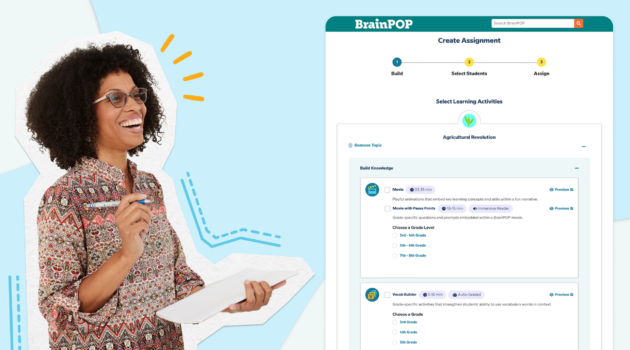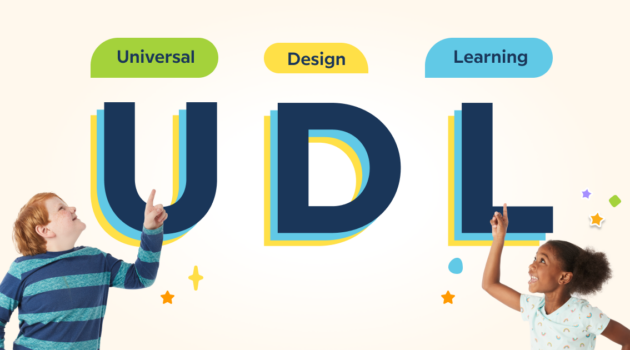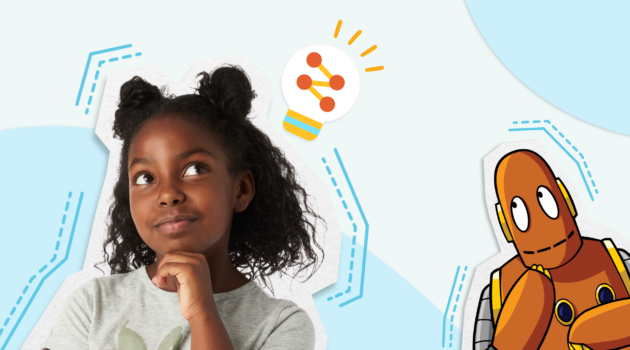Teaching Strategies
Reimagining How to Reach the Needs of the Whole Child

As we navigate a new school year, how are education leaders mitigating the potential risk of learning losses for an entire generation of students? How are they addressing equity gaps amidst so much turmoil: the pandemic, social unrest, wildfires? How are leaders reframing what “essential” student learning, engagement, and support looks like as we navigate classroom, hybrid or fully remote environments?
With these themes top of mind, BrainPOP convened a panel of education administrators and thought leaders to share their perspectives on reimagining student engagement, measurement, and the importance of making time for more than ELA and Math.
The panel, titled The Art and Science of Back-to-School 2020, was moderated by BrainPOP CEO Scott Kirkpatrick and hosted by Kari Stubbs, Ph.D., VP of Strategic Alliances. The panelists included: Dr. Folasade (Ade) Adekunle, Principal at Sayre Language Academy, Chicago Public School; Jonathan Garcia, Chief Engagement Officer at Portland Public Schools; Jinan O’Connor, Vice President, Advocacy and Public Partnership at DonorsChoose; and Steve Osborn, Chief for Innovation at Rhode Island Department of Education.
Following are key themes from the conversation with our panelists, including actionable takeaways to support your school or district work.
The Right Balance of Broccoli and Cupcakes
“Help keep kids engaged in learning what they want to learn about. The best analogy that we had for it was trying to figure out the way of giving the right amount of broccoli and mixing it with a cupcake,” shared Steve Osborn. “Where you are getting the good stuff you are are also giving the stuff that’s going to make them come back.”
Dr. Ade described the current crisis as an opportunity to go back to the drawing board and ask, “How did we get here in the first place—of focusing on reading and math only?” At the 11-minute mark in the webinar, which is available on demand, Dr. Ade challenges viewers to lean into this moment as an opportunity to return to a more cohesive and cross-disciplinary structure.
The Importance of Student Voice
Jonathan Garcia’s insights from Portland, the epicenter of social unrest amidst this global pandemic, were both timely and insightful: “Our community really situates racial equity and social justice at the center of a lot of our rhetoric and a lot of our actions.” This mandate inspires the Portland School district to challenge local systems and foster the necessary skills in our future world leaders.
Education’s Frontline Workers
“Teachers at the frontline are most concerned about the impact of social and emotional learning at this time,” revealed Jinan O’Connor, along with insights from a recent DonorsChoose survey of teachers.
The DonorsChoose-Equal Justice Initiative partnership helps educators equip a new generation with the tools and knowledge they need to understand and eliminate racism, bigotry, and inequality.
Dr. Ade followed up with inspiration from her frontline workers—the educators at Sayre Language Academy—where they are expanding the definition of and approach to supporting kids’ social and emotional needs by bringing personal passion projects to their learning community.
Focus on Bringing Kids Joy
Steve Osborn extends social and emotional connections by reminding us of the stress associated with this moment in history: “Let’s make learning fun. You want that energy. You want that emotion.” Osborn offered insights into how Rhode Island education is prioritizing joy, and sharing thoughts on why measurement is critical this year. Osborn challenged us to picture what this time in history would feel like if we were between the ages of 8 and 14, emphasizing the need for this empathetic leap to engage kids so that they come alive in the classroom.
During this challenging and ever-changing educational climate, hearing leaders’ insights and sharing our own is more important than ever.






